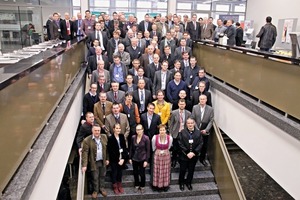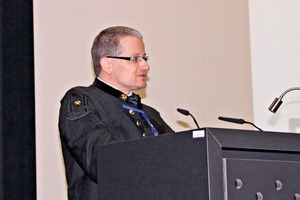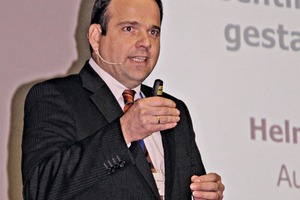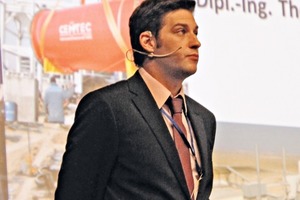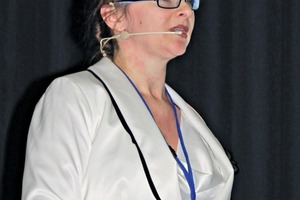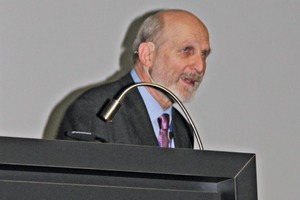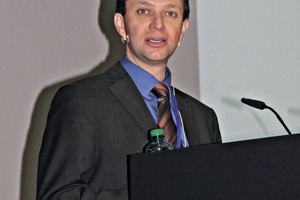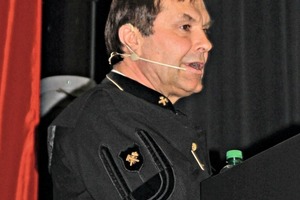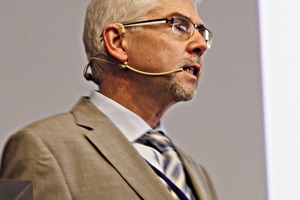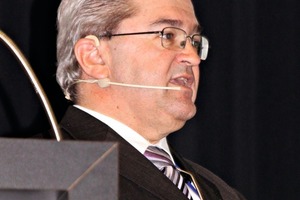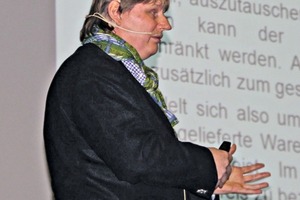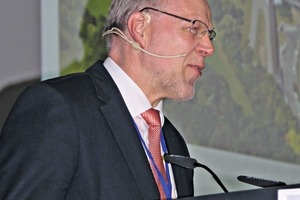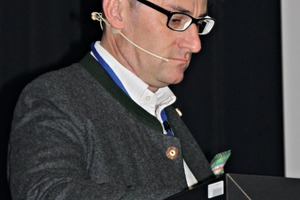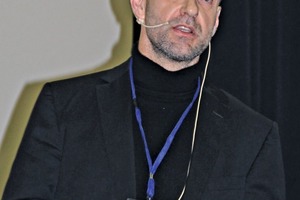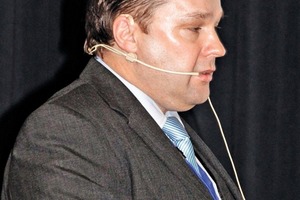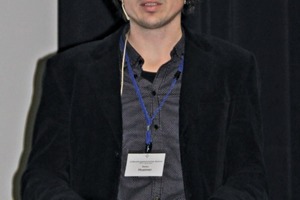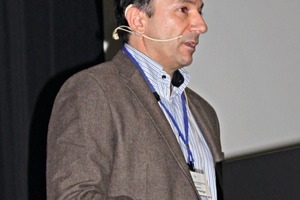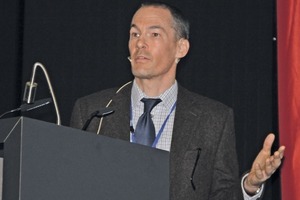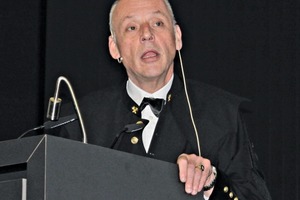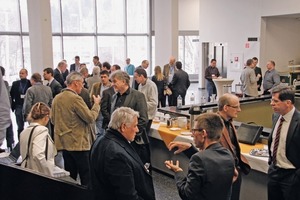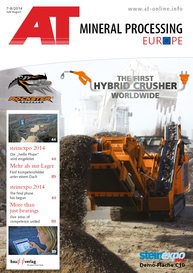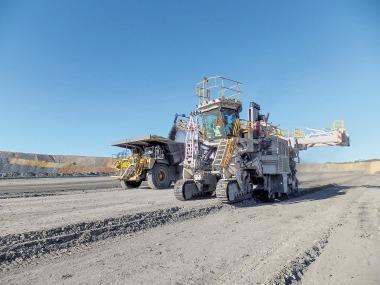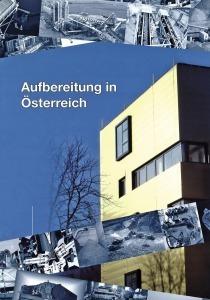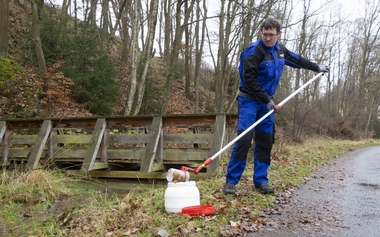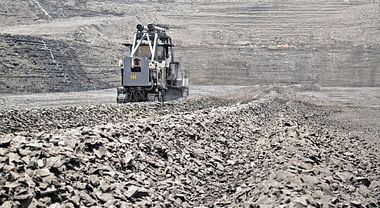New installation and conversion of mineral processing plants
The Mineral Processing Seminar 2014, held on 30 to 31 January 2014 in Leoben/Austria, was devoted to the “New installation and conversion of mineral processing plants – from project idea to commissioned plant”. The event was organized by the Bergmännischer Verband Österreich (BVÖ – Austrian Miners Association) together with Committee for Mineral Processing, the Montan University of Leoben and the “Mineral Resources Forum” working group of the Austrian Economic Chamber. 150 executives and professionals from science and research, from the primary and the suppliers industry as well as from politics discussed against the background of a wide range of projects the key criteria of approval procedures from the different perspectives of the authorities, the plant operators, the project clients, the designers and the plant engineers. Also discussed were financing and performance guarantees as key contract components as well as environmental and noise protection aspects, which are coming increasingly to the fore in the scope of approval processes.
With the help of mineral processing, from run-of-mine (ROM) material a raw material is produced with strictly defined properties, making it suitable for downstream industrial processing. In his paper headed “Mineral processing testing as an important basis for process design in mineral processing plants”, Univ.-Prof. Dipl.-Ing. Dr. mont. Helmut Flachberger showed how important the characterization of ROM materials is as a source of information for the design of plants in mineral processing in order to achieve the best results in both technical and economic terms. This not only applies to primary raw materials, e.g. ores, industrial minerals, salts, etc. but secondary resources too, such as slag, sludge, dust or chippings, etc. In this context, it is necessary to clarify in advance the material content relevant to mineral processing, how the materials are intergrown and what mineral properties can be used to separate the materials from each other.
From the composition of a mineral, it is possible to derive whether the required product quality can actually be achieved with the ROM material from the deposit. The analysis of the intergrowth provides information of how far the raw material must be comminuted until it is liberated sufficiently for separation. Based on the target particle size and the grindability analysis, it is possible to determine the specific energy needed to achieve the required size reduction ratio. From the characteristic class analysis, it is possible to determine which properties are available to effect separation and at which cut-points separation can be performed. In addition, the characterization of the ROM material generally provides further detailed findings on specific characteristics of the ROM material, which, for example, could have a detrimental effect on flotation processes.
What, sometimes even surprising, influence ROM materials analysis can have for process engineering decisions in mineral processing was shown by Prof. Flachberger with reference to various case studies. For instance in the processing of rock crystal concentrate in Haselgebirge in the Salzkammergut region of Austria, the question arose of whether a rock crystal product could also be produced by means of physical methods. As a result of careful ROM material analysis, in this case on account of magnetic mineral phases contained in the accessory rock, a magnetic separator has been introduced as a central sorting machine.
Referring to the set-up of gold grinding plant for the Russian gold producer Polyus Gold at the Natalka Mine in Eastern Siberia (surface mining), Dipl.-Ing. Thomas Plochberger from CEMTEC Cement and Mining Technology GmbH, Enns/Austria, reported on the “Design of plants and machinery from the view of an internationally operating plant supplier”. On the second day of the event, Mag.(FH) Daniela Kristaly, CEMTEC Cement and Mining Technology GmbH, Enns, gave a fascinating insight into the challenges thrown up in the processing of a project on this scale in her paper entitled “Project financing and logistics – from the start to the finish of international investment projects in the mineral resources industry”. CEMTEC supplied not only the mechanical grinding equipment, but the entire processing equipment too and was therefore responsible for the overall process layout. On the basis of the results returned from ROM material characterization, the company created simulation models to calculate all the mass flows in the circuit and, on the back of this, to realize the design of the entire plant (incl. screens, pumps and cyclones). Following receipt of the order, the plant was then engineered in cooperation with long-standing manufacturing partners (incl. MCE, Voest Alpine, IFE).
Previously, however, the financing of the project including risk protection was ensured, the transport concept including risk assessments such as high or low water levels or ice as well as all necessary approvals and documents for customs clearance and insurance were prepared, and the transport route as well as the transport dimensions and weight of the plant components were coordinated and agreed with the client. The entire plant with a tare weight of just less than 4000 tonnes was shipped, for instance, from Linz/Austria or Durban/South Africa via Antwerp and Indonesia to the destination port of Magadan in North-Eastern Russia. Following unloading and customs clearance, the client undertook further transport by truck to the final destination. In September 2013, assembly of the grinding plant was commenced. The plant was installed over the course of the winter, sometimes at temperatures down to -40 °C. The remaining processing equipment is now being installed, although with the help of three CEMTEC employees. Commissioning is scheduled for 2015.
As a key precondition for this impressive project, Thomas Plochberger proposed various criteria. Already in the pre-planning or tendering phase, considerable effort is required, for instance a great deal of documentation is needed. In addition, global references are important in advance. Export financing should also be secured. Short lead times, a competitive price and various contractually agreed process guarantees with regard to throughput rate, product fineness and availability of the plants are of enormous importance.
Subsequently, in his paper on the “Planning of plants and machinery from the view of an internationally operating raw materials group” Dipl.-Ing. Wolfgang Stoiber from Lafarge CTEC GmbH, Vienna/Austria, explained the flow of a project from the initial idea to continuous operation including all necessary steps in between. The speaker described the various project phases and the project organization with the respective tasks and responsibilities to clarification of the economic viability and the feasibility of a project. Besides mentioning detailed specifications for the invitation to tender, which for example include standardized company specifications, based on the example of vertical mills (vertical tube mill, vertical cement mill), he looked at various contractual agreements that are defined in detail – for instance with regard to the throughput rate, specific energy, product quality, emissions, availability, mechanical guarantees (e.g. lifetime of the roller bearings), wear, safety concept during the assembly and installation phase, etc. And, of course, he said, it was essential to keep to any agreed schedule.
A project should be economically viable in every respect. For this reason, a raw materials group as a client has great interest in designing, building and commissioning a plant to continuous operation as quickly as possible, without the need for any significant reworking of the plant, but with the highest possible availability in accordance with the agreed contract details. On commissioning of a plant, it should not run at either a lower or higher rate than the demanded performance guarantees as this too can incur damages or costs.
In their paper “From project idea to successfully modernized clinker production plant at the St Leonhard site of Zementwerk Leube GmbH”, Dipl.-Ing. Dr. mont. Günter Waldl, Zementwerk Leube GmbH, St. Leonhard, and Dipl.-Ing. Wolfgang Freimann, A TEC Production & Services GmbH, Krems, reported on a joint project for long-term assurance of sustainable clinker production. After more than 40 years, modernization of the production plant had become necessary. From 2006, initial ideas for the execution of the project were collected, and following comprehensive preliminary studies and a feasibility study in 2008, the approval procedure was initiated. The conversion work started in July 2009 and after just a 15-month accident-free building phase, the first clinker left the new production plant on 20.10.2010. The entire project with an investment of € 31.5 mill. was realized by the company’s own project team with the support of A TEC Production & Services GmbH. Accordingly, Dr. Waldl presented the entire project from the starting situation through the scope of the project, the different project phases, the organization including guarantees and project insurance, up to commissioning, while Dipl.-Ing. Freimann explained project details, i.e. individual plant components and configuration up to acceptance of the modernized plant and its commissioning.
After three years of experience with the new calcining technology, the speakers agreed that the set goals and expectations had been met fully and all performance guarantees achieved. The schedule and budget were complied with, and even during the conversion phase there were no production bottlenecks. Compared to the old plant, following commissioning of the new plant, power consumption has been reduced by around 20 %. The plant easily complies with emissions limits. The throughput rate of the new furnace line can be optimally adjusted in one-furnace operation to the seasonally varying sales volume, and flexibility is ensured in respect of the different fuels, raw materials and production rates.
Dr.-Ing. Henning Morgenroth, UVR-FIA GmbH, Freiberg, reported on the “The new processing plant of the Erzgebirgische Fluss- und Schwerspatwerke GmbH in Aue (Erzgebirge)”. After around 40 years of being mothballed, a mine was reopened in Saxony at the beginning of November 2013. Initial ideas regarding this project came in 2006 as the rising trend of the raw materials prices on the world market made the development of a spar deposit that had been originally explored back in the 1960s seem realistic from a market-related perspective. After the approval had been granted in 2009, and following extensive preliminary work on reopening the mine, at the end of 2013 the first ore could be extracted from the spar pit in Niederschlag and supplied to the processing plant in Aue 40 km away. Installed underground, besides the extraction of the raw spar (incl. backfilling of the process tailings) are the primary comminution and pre-separation of the tailings. Downstream of the grinding of the raw ore to < 0.2 mm, a multistage flotation process is installed for separation of the sulphides and extraction of a fluorite concentrate as acid spar and a baryte concentrate, as well as for thickening and dewatering of products and tailings. The plan is set to extract around 135 000 t raw spar per year in the next 25 to 30 years. However, there is still need for optimization, for example with regard to the final purity and yield of product.
In the afternoon, the focus was on guarantee claims and performance guarantees with reference to concrete examples from the perspective of plant engineers and plant operators. Dipl.-Ing. Werner Präsoll, Maschinenfabrik Liezen und Giesserei GmbH, Liezen/Austria, kicked off with a field-oriented presentation of “Process and wear guarantees in the installation of mineral processing plants” with reference to a secondary crusher (impact crusher with screen) for a limestone quarry in Algeria. The agreement of mechanical, process, wear and other guarantees, e.g. in respect of availability or specific machine properties are often the clinching argument with regard to the placing of an order. To give the plant operators the greatest possible security, but to protect the plant engineering companies against ruinous claims from the plant operators too, very precise definitions must be set down in advance – and that is with regard to the general conditions (physical and chemical properties of the starting material, installation situation for individual machines, etc.), the environmental and application conditions (climate, plant operating times), the performance of the tests and criteria for warranty fulfilment as well as a financial and time limit for the performance guarantees with allowance for a remediation phase.
Unlike a statutory guarantee, performance guarantees are additional voluntary pledges with regard to certain behaviour or certain properties of the plants supplied, which are not subject to any statutory obligations. Performance guarantees are becoming a key economic factor in plant engineering today. Suppliers try to win orders by offering performance guarantees, while clients attempt to retain any liability escrow on project completion. It is not unusual to have demands for multiple guarantees which then “cancel” each other out. In his paper on “Performance guarantees in grinding and separation processes in theory and practice”, Dipl.-Ing. Dr. mont. Jürgen Roth, PMT Jetmill GmbH, Kammern, explained some relationships on which performance guarantees can be based, which concern mechanical, process and wear aspects (see AT MINERAL PROCESSING 06/2014, p. 67-72). With regard to the wear guarantees for mills, for example, not only the costs for the component to be replaced must be taken into account but the process loss during plant downtime must also be considered. Roth concluded his report with an appeal that project tenders should be scrutinized with a view to the entire lifetime of an investment and that good cooperation between customers and suppliers even beyond conclusion of a project should be brought back to the fore so as to benefit both partners.
In his talk on the “New underground mineral processing plant for improving the quality of rock salt at the Stetten Salt Mine of Wacker Chemie AG – introduction of special screens and sensor-assisted sorting”, Dipl.-Ing. Alfred Höllerbauer, Wacker Chemie AG, Haigerloch, took the attendees on a journey back in time. He reported on necessary modernization that accompanied the switch from electrosorting to magnet-based processing back in 2004. As a result of this, besides a considerable quality improvement, the power consumption of the entire mine could be halved. Of great importance for the necessary installation underground was the commissioning of the Clara drift in 2008 as an additional third access to the Stetten Salt Mine. Since then other parts of the underground processing plant have been steadily replaced or converted, resulting in further optimization of the industrial salt production – not least to meet the company’s declared goal of balanced tailings management.
Dipl.-Ing. Dr. mont. Roman van Ommen spoke on the “Global practice of machine and product guarantees in mineral processing plants”. Besides defining the terms of warranty, guarantee, damage compensation and product liability, van Ommen explained what he sees as important with regard to process engineering and process guarantees and what values are used in the evaluation of mechanical wear and availability or commercial guarantees. His dedicated field report gave rise to lively discussions that were continued during the subsequent evening gathering.
The second day of the event began with a paper presented by Dipl.-Ing. Alexander Kogler, centerline management consulting, Linz/Austria, on the “Tensions between investor and plant engineering company in the processing of complex capital goods projects”. Kogler describes industrial plant engineering as one of the most complex businesses to manage and sees project management as conflict management. Against the background of great complexity with regard to content, technical but also social and cultural aspects, tensions and conflict on account of poor communication are generally inevitable.
Those involved should be clear that they live in different process worlds and have different goals. While the plant engineering companies are only temporarily involved and strive towards fast processing of complex projects, for the plant operator the focus is on the continuous production process with the longest possible service lifetime of the plant. For this reason, right at the start of a project, sufficient time and attention should be given. Expectations and goals of both parties should be defined as clearly as possible on a measurable scale and, besides quality, cost and time schedules, communication structures, competences and responsibilities, handling of change processes and possible conflict solution strategies must be taken into consideration. Operating and maintenance staff should be brought into the process as early on as possible. In addition, precise communications planning is necessary to extend over the entire duration of the project. Regular project controlling and acceptance of the necessity and suitable handling of change processes should be a must, as should be periodic discussions, documentation and the transfer of learning experiences. Conflicts cannot always be ruled out. With the measures described, however, it should be possible to prevent an escalation or reduce tensions so as to arrive at a conclusion that is acceptable to both parties.
Key aspects of the “Conversion of old dedusting systems to modern jet filters” were the subject of a paper by Wilhelm Aigner and Stefan Huemer, Scheuch GmbH, Aurolzmünster/Austria. Without proper dedusting, many production processes would not work. It is important not only to look at specific aspects of dedusting, but at the process overall from dust collection at the point of origin and its transport in pipelines, dedusting in a dedusting system including discharge of the dust through the generation of low pressure in a fan to low-noise emission through the flue gas stack. On the basis of various examples – e.g. the conversion of an electrofilter at a cement works – the speakers underlined how important it is to look at the entire dedusting chain and optimally adjust each individual link to the next so as to ultimately realize economically and ecologically viable dedusting.
Mag. Manfred Hattenberger, AggloTech GmbH, Ennsdorf, reported on the “Realization of a processing plant for fine-grain iron from pig iron desulphurization”. Owing to the use of sulphur-containing fuels in the blast furnace process, pig iron always contains a certain amount of sulphur, which, however, has to be reduced to a defined level, before the pig iron can be converted to high-grade steel in the converter. In the desulphurization process, fine-grain iron < 10 mm is produced as a by-product that, however, still has an iron content of around 50 %. AggloTech GmbH was contracted to develop a concept for the mechanical and physical processing of the fine iron.
Hattenberger outlined the entire development process: from definition of the problem to the initial research and tests at machine manufacturers on pilot plant scale with verification of the results on industrial scale, the set-up of a test plant in Ampflwang as a pilot plant to the installation and commissioning of the plant in Ennsdorf – though this not without a complex approval process, lasting around 15 months, in which the involvement of a local citizen action group played a key role in bringing the project to a positive conclusion that was also acceptable to the local residents. At the plant three products are currently produced: metallic iron granules used as scrap in the iron and steel industry, iron-enriched briquets used as secondary iron-bearing materials, comparable with iron ore pellets in blast furnaces, and finally an iron-depleted mineral fraction that can be used as a waste-derived construction material or additive in fertilizer production. Finally, the speaker gave an outlook on the future direction of the plant, e.g. planned optimization of the production process and the logistical flows.
The internal operational planning of a overall project to its execution was the subject of the paper “Project management for mineral processing plants” presented by Robin Marks, Omya International AG, Reinach/Switzerland. He reported on the project management system that was completely redeveloped from scratch as part of the restructuring of the company associated with its relocation to Reinach/Switzerland in 2009. The system is based on the PMI® method and has been used successfully worldwide for three years for initiating, planning, executing, monitoring and controlling as well as completing all the company’s projects all over the world. Omya opted to introduce the PMI® method because the standards and language of this system are recognized worldwide and it is used in both the private and public sectors as well as being suitable for a wide range of projects.
In the last talk at the event MR Dipl.-Ing. Mag. jur. Alfred Zechling, Federal Ministry for Industry, Family and Youth – Mining Authorities for Southern Austria, spoke about the aspects to be taken in consideration in the “Installation and conversion of mineral processing plants from the view of the authorities”. The installation of a new mineral processing plant is subject to approval in every case – depending on whether the new installation is by definition a mining, commercial or waste treatment plant, the Austrian Industrial Code, the Mineral Resources Act or the Waste Management Act is applied. The most important approval criteria are protection of local residents and businesses and environmental protection. Classification of an installation as a mining plant, for example, makes the choice of site easier as such installations may be built on open land that does not have to be a designated industrial estate. The conversion of an existing and already approved plant is also generally subject to approval. This requirement is only waived if no additional emissions are generated as a result of any changes made. Mobile or semi-mobile processing plants are regarded as special cases in that they are treated as accessory mining equipment and as such are not subject to approval.
With this concluding paper, the conference attendees received from a competent source a comprehensive insight in the prevailing legal basis, with particular consideration of the new legal situation regarding administration processes that came into effect in Austria on 1 January 2014 and are associated with serious changes for approval procedures. Experience with the new regulations is keenly anticipated so as to establish whether the changed legal situation and the procedures prove effective in practice.
Thanks are due to the organizers who with their excellent organization and selection of papers at the Mineral Processing Seminar 2014 in Leoben succeeded again in setting a first highlight at the very beginning of the year’s calendar of events. The two days of the event were marked by a high-calibre programme of papers with a great deal of field-oriented information and ideas for strategic procedures to ensure a sustainable supply of mineral resources. There was ample material for lively and sometimes controversial discussions in the breaks and during the evening gathering. The next Mineral Processing Seminar will take place in Leoben/Austria from 29.-30.01.2015 and will no doubt tackle another current topic in its proven manner.
Author: Ulrike Mehl, AT MINERAL PROCESSING

